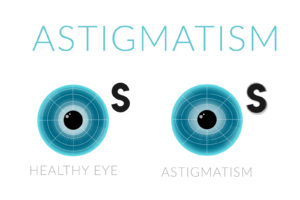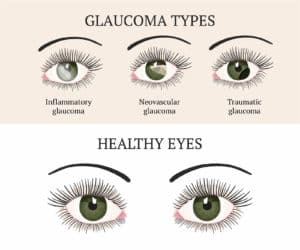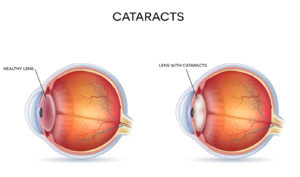
5 LASIK Alternatives and Their Risks
LASIK surgery comes with a bed of risks ranging from overcorrection to vision loss to glares and double vision. A surgery shouldn’t cause the problems you set out to fix. So, are there any LASIK alternatives?
Along with LASIK eye surgery, five new alternatives have broken out onto the eye surgery scene. Those who don’t make the cut for LASIK surgery are filled with hope and promises that these new alternatives are the waves of the future. And, while these alternatives can have a huge impact on quality of life by improving and restoring vision, there are risks that aren’t always mentioned.
Before making the snap decision to have one of these surgical procedures, we want you to know all the relevant information so you can weigh the pros and cons.
1. iDesign Advanced WaveScan Studio System
iDesign Advanced WaveScan Studio System is an FDA approved device born from the idea of Wavefront LASIK surgery. This type of surgery provides a customized surgery specific to your eye. With this wave scanning technology comes the promise of an accurate scan of the eye for an even more personalized LASIK treatment.
One positive is that because of its customizing features, Wavefront LASIK is more precise than other types of LASIK surgery. The positives end there. Because this is still a LASIK type surgery, the risks are generally the same:
- Dry eyes
- Halos or glare
- Flap problems
- Vision returning to pre-surgery vision
That last one’s got to hurt especially if you’re spending upwards of $2,000 per eye. According to an FDA study, 45 percent of participants (312 people) experienced visual symptoms that they had not experienced before undergoing the surgery.
2. Femtosecond Laser Technology
 This new technology is used for two things: to create thin LASIK flaps and to remove eye tissue. Doctors perform this procedure with laser pulses instead of a blade. This being a new technology is one of its greatest risks. As with any technology, there’s a learning curve for everyone involved, even for experienced doctors.
This new technology is used for two things: to create thin LASIK flaps and to remove eye tissue. Doctors perform this procedure with laser pulses instead of a blade. This being a new technology is one of its greatest risks. As with any technology, there’s a learning curve for everyone involved, even for experienced doctors.
Doctors are also confident that this type of surgery has many of the same risk factors as LASIK, since it uses the same laser technology. So, you are not necessarily reducing surgical risk by choosing this option.
3. Visian Implantable Collamer Lens Surgery
Visian ICL surgery includes placing a semi-permanent contact lens into the eye. Because it is semi-permanent, it can be kept in the eye forever or be removed at any time.
One of the most common complications of visian ICL surgery is overcorrection and undercorrection. Doctors, of course, try as hard as they can to take the most precise measurements, but there is always room for error. A slight miscalculation may result in the wrong level of correction. The only way to fix these poor corrections is through additional LASIK surgery.
Another common complication is that of halos and glare around light. This risk is high whenever operating on a lens. It can range from slight to severe. This complication also worsens night vision, especially when driving. Oncoming headlights can cause heavy amounts of glare and flash blindness.
4. KAMRA Inlay
The KAMRA inlay procedure mostly serves older people who suffer from presbyopia and who need reading glasses. During the procedure, the doctor inserts a small inlay with a punctured hole into the cornea. This then allows focused light to enter the eye more easily. Doctors perform the inlay on one eye only, and then the brain works with both eyes for clearer vision.
Though the KAMRA inlay surgery was approved by the FDA in 2015, in 2014 the FDA panel was split down the middle. Half approved the surgery, and half believed that the risks involved outweighed the benefits. Currently, the FDA still warns that while this surgery is approved, it is not without risk, and it is not always even effective.
This corneal inlay can cause blurred vision, glares, color disturbances, dryness, burning, and pain. Other more serious complications may include infections, inflammation of the cornea and eye swelling.
While the KAMRA inlay can be removed, that process can cause even more complications. Once removed, a person’s vision will most likely return to its original level. However, this does not guarantee your eyes will be spared of any damage from the KAMRA inlay removal.
5. Epi-LASIK
Epi-LASIK promises to reduce the risks normally involved with regular LASIK. This type of surgery relies on techniques such as cutting with blunt, plastic blades, as well as using this blade to loosen the epithelium sheet instead of using alcohol as done in LASEK surgery.
This type of surgery comes with a whole new set of risks, even if it promises to be rid of the usual issues that may come from LASIK or LASEK procedures. Patients experience longer recovery times from this type of surgery than they would from normal LASIK. Patients will have blurred and scratchy vision for four to five days after surgery.
Professionals recommend taking a week off from work after having Epi-LASIK surgery. The reason for this is that though patients can legally drive after the surgery, they shouldn’t. Vision acuity can fluctuate during the recovery process making their vision unpredictable. With Epi-LASIK surgery, it can take up to six months to see the full results of the surgery.
Some additional concerns are dry eyes, epithelium erosion, halos and glares, corneal flap complications and incorrect corrections.
Do Your Research First
These five new advances in laser eye surgery may seem like the ways of the future, but the truth is the complications and risks involved have yet to be ironed out. Eye surgery should be a last resort. No amount of benefits are worth risking your overall eye health. As you’ve probably learned by now, LASIK surgery comes with far too many risks.
The complications involved in these LASIK alternatives can be anywhere from mild to severe. Because our eyes are all unique, one person’s eyes may not respond to surgery in the same way as another’s. This makes predicting the aftermath of the procedures difficult. This is why you should do everything you can to support healthy vision other ways.
Before making any decisions regarding something as serious as eye surgery, be sure to weigh all your options including natural alternatives like eye vitamins. This way you can be well-informed and in control of your own eye health.
Our Rebuild Your Vision Ocu-Plus Formula Contains All 17 Vitamins, Minerals, and Herbal Supplements to Improve Your Eye Health!












Leave Your Reply